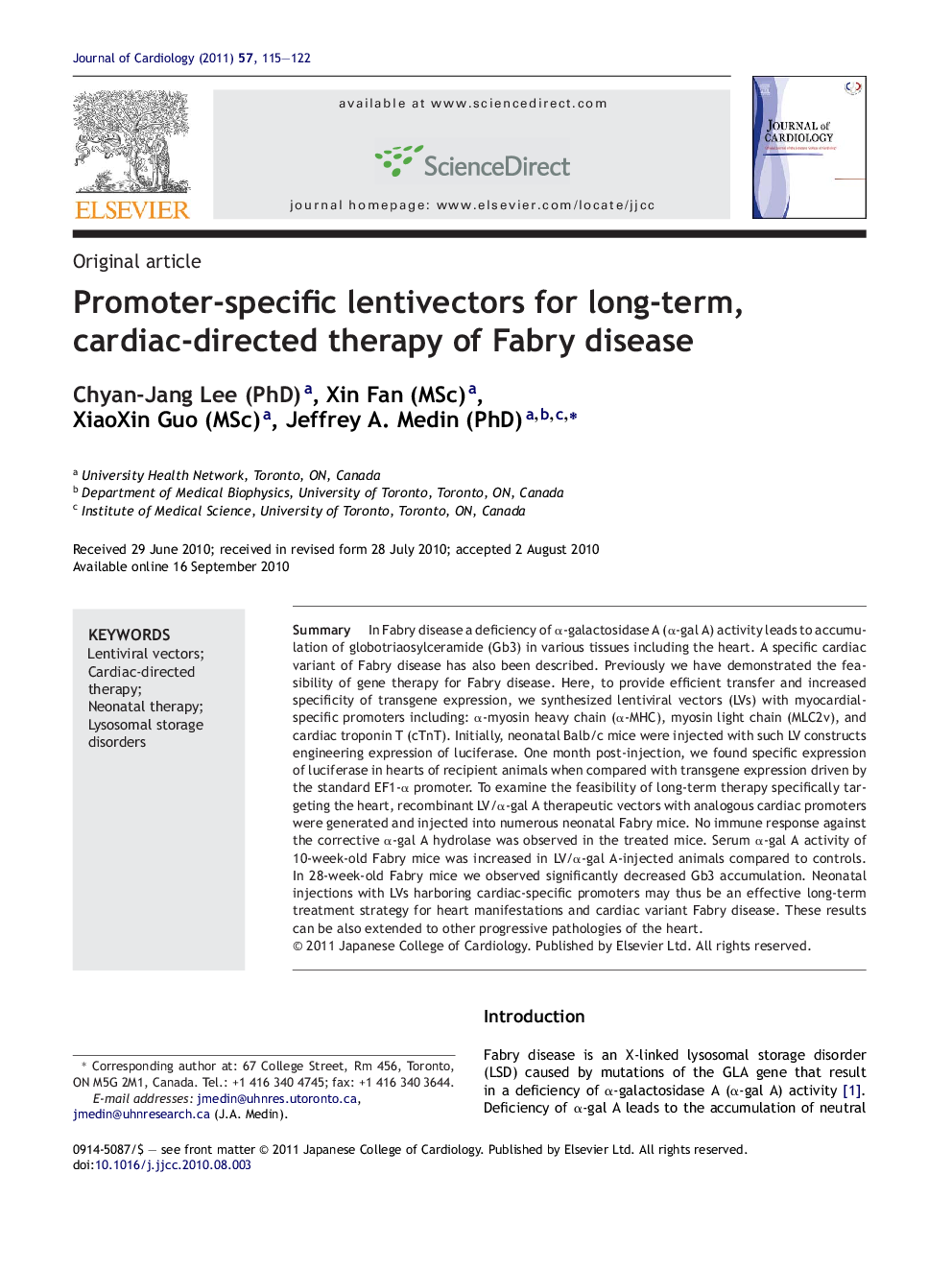| Article ID | Journal | Published Year | Pages | File Type |
|---|---|---|---|---|
| 2963461 | Journal of Cardiology | 2011 | 8 Pages |
SummaryIn Fabry disease a deficiency of α-galactosidase A (α-gal A) activity leads to accumulation of globotriaosylceramide (Gb3) in various tissues including the heart. A specific cardiac variant of Fabry disease has also been described. Previously we have demonstrated the feasibility of gene therapy for Fabry disease. Here, to provide efficient transfer and increased specificity of transgene expression, we synthesized lentiviral vectors (LVs) with myocardial-specific promoters including: α-myosin heavy chain (α-MHC), myosin light chain (MLC2v), and cardiac troponin T (cTnT). Initially, neonatal Balb/c mice were injected with such LV constructs engineering expression of luciferase. One month post-injection, we found specific expression of luciferase in hearts of recipient animals when compared with transgene expression driven by the standard EF1-α promoter. To examine the feasibility of long-term therapy specifically targeting the heart, recombinant LV/α-gal A therapeutic vectors with analogous cardiac promoters were generated and injected into numerous neonatal Fabry mice. No immune response against the corrective α-gal A hydrolase was observed in the treated mice. Serum α-gal A activity of 10-week-old Fabry mice was increased in LV/α-gal A-injected animals compared to controls. In 28-week-old Fabry mice we observed significantly decreased Gb3 accumulation. Neonatal injections with LVs harboring cardiac-specific promoters may thus be an effective long-term treatment strategy for heart manifestations and cardiac variant Fabry disease. These results can be also extended to other progressive pathologies of the heart.
